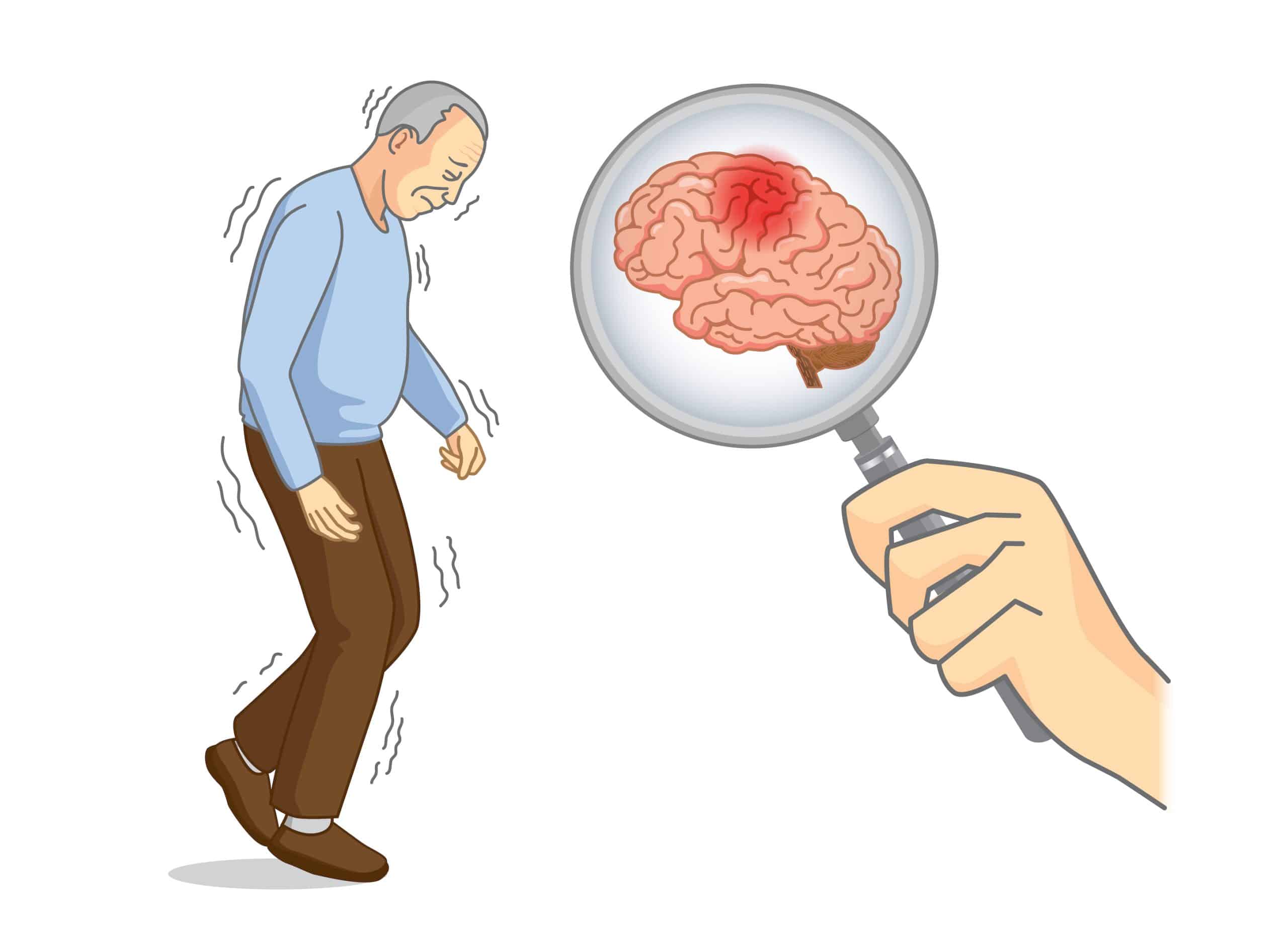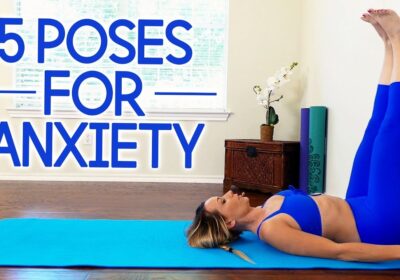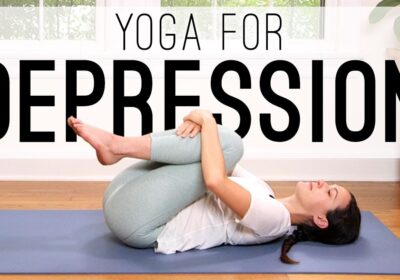Living with Parkinson’s? Try Yoga for Improved Quality of Life

Summary:
- Regular practice of yoga can improve posture, balance and coordination; increases flexibility and range of motion; improves strength and endurance; reduces tremors, stress and anxiety; and overall improves quality of life.
- Balancing postures, breathing practices, meditation, relaxation and chants are particularly useful for symptoms of Parkinson’s disease.
- Modifications are needed for many yoga practices to make them safe for patients with Parkinson’s disease. These modifications are the use of props, wall-support, chair. Postures are simplified and fast practices are changed to slow practices.
Parkinson’s disease is a neurological disorder that affects the motor system and can cause tremors, stiffness, and difficulty with movement and balance. While there is no cure for Parkinson’s disease, complementary therapies such as yoga can be helpful in managing symptoms and improving overall well-being.
Yoga involves a combination of physical postures, breathing exercises, and meditation techniques that can help improve flexibility, balance, and strength. Yoga can also help reduce stress and promote relaxation, which can be particularly beneficial for individuals with Parkinson’s disease. Yoga can be a useful add-on to patients with Parkinsonism of different etiologies.
There are many yoga practices that can be useful for individuals with Parkinson’s disease. Here are a few examples:
Standing poses: While standing poses can be more challenging for individuals with Parkinson’s disease, they can help improve overall posture, balance, coordination and strengthen legs. Modified versions of poses such as vrikshasana (tree pose), tadasana, garudasana, ardhakati chakrasana and warrior I can be helpful. Different types of walking (drill walk, walking in a straight line, sideways walk, walking on the toes, walking on the heels) when performed using yogic approach will be an additional benefit.
Seated poses: Seated yoga poses can be helpful for individuals with Parkinson’s disease who may have stiffness and lack of flexibility as the major issues. Poses such as seated forward bends and spinal twists can help improve flexibility and reduce stiffness.
Prone and Supine Postures: These groups of postures are the easiest for patients with Parkinson’s disease and can involve all body parts. Some of the useful postures are bhujangasana, ardha shalabhasana, dhanurasana, uttanpadasana and pawanmuktasana.
Pranayama: Pranayama can help reduce stress and promote relaxation, which can be particularly beneficial for individuals with Parkinson’s disease. Some useful breathing practices are nadi Shodhana (Alternate Nostril Breathing), deep breathing, full yogic breath, abdominal breathing and bhramari pranayama.
Breathing Practices: Breathing practices can be one among the best practices for patients with Parkinson’s disease. These practices help in bringing balance, synchronization (of body and breath), coordination and stability. Besides, the difficulty level of these practices is less in comparison to the similar original postures which makes them possible among elderly.
Meditation: Meditation can be helpful for improving focus and reducing stress and anxiety. Practices such as mindfulness meditation and body scan meditation can be beneficial. Any type of meditation can be taken up depending upon the patient’s belief and convenience.
Chanting: Chanting may be useful for patients with Parkinson’s disease for dealing with the symptoms of difficulty in speaking (dysarthria), difficulty in swallowing (dysphagia) and reduced facial expressions. Typical examples of chanting are bhramari chanting, Om chanting, Bhagavad Gita shloka chanting, vedic chants and shanti mantra chants etc.
Cleansing Practices: Cleansing practices such as jala neti and sutra neti, though considered generally good, may not have any specific benefit for patients with Parkinson’s disease. Extra caution is to be exercised while attempting both these practices due to risk of unintended injury to nasal passage and loss of balance in view of needing to lean forward for the practice. Laghu shankha prakshalana can be considered overall good for its benefits for the digestive system. Kapalabhati or other fast breathing practices are useful but associated with higher risk of episodes of dizziness.
Relaxation/Yoga Nidra: All types of relaxation techniques (guided relaxation or shavasana) are useful for patients with Parkinson’s disease. These practices can help reduce stress and promote relaxation.
There are some yoga practices that may be contraindicated or not recommended for patients with Parkinson’s disease. All advanced practices are either to be avoided or to be done cautiously. Here are a few examples:
Inversions: Inversions such as shirshasana (headstand), sarvangasana (shoulder stand), chakrasana (wheel pose) etc. may cause dizziness or lightheadedness, apart from the risk of fall and are to be avoided by patients with Parkinson’s disease.
Quick or jerky movements: Quick or jerky movements may increase the risk of falls and exacerbate symptoms such as tremors and dizziness. Hence, sudden change in the postures is to be strictly avoided among patients with Parkinsonism.
Deep twists: Deep twists may be difficult for individuals with Parkinson’s disease and may be painful and also exacerbate symptoms such as stiffness.
Overstretching: Overstretching may exacerbate symptoms of Parkinson’s disease and increase the risk of injury.
Intense or vigorous practices: Intense or vigorous practices may be too physically demanding for individuals with Parkinson’s disease and may exacerbate symptoms such as fatigue.
Here are some modifications that may be needed for individuals with Parkinson’s disease when practicing yoga:
Balance and stability: Individuals with Parkinson’s disease may have difficulty with balance and stability. Modifications such as using a chair or wall for support during standing poses, or practicing seated poses, can help improve balance and stability.
Slow and controlled movements: Individuals with Parkinson’s disease may experience tremors or involuntary movements, so practicing slow and controlled movements can be helpful. This can include moving through poses slowly and mindfully, and focusing on breath and alignment.
Flexibility and mobility: Parkinson’s disease can cause stiffness in the muscles and joints, so modifications such as using props (e.g. blocks, blankets) can help improve flexibility and mobility.
Pranayama modifications: Parkinson’s disease can also affect breathing, so practicing breathing exercises such as pranayama can be helpful for improving lung capacity and reducing stress. These practices might need to be modified due to reduced capacity of deep breathing and risk associated with the fast breathing practices. Kapalabhati and Bhastrika are preferably done at a slower pace.
Modifications for individual needs: It’s important to work with a qualified yoga instructor who has experience working with individuals with Parkinson’s disease and can provide modifications for individual needs and limitations.
Here are some precautions to keep in mind while practicing yoga for Parkinson’s disease:
Consult with a healthcare provider: It’s important to speak with a healthcare provider before beginning a yoga practice to ensure that it is safe and appropriate for your individual needs.
Work with a qualified yoga instructor: Working with a qualified yoga instructor who has experience working with individuals with Parkinson’s disease can help ensure that modifications are made to accommodate individual needs and limitations.
Avoid poses that exacerbate symptoms: Certain poses may exacerbate symptoms such as tremors, stiffness, or balance issues. It’s important to avoid any poses that cause discomfort or exacerbate symptoms.
Avoid overexertion: Parkinson’s disease can cause fatigue, so it’s important to avoid overexertion and to rest when needed. It’s important to listen to your body and to modify or stop any pose or movement that causes discomfort or pain.
In conclusion, yoga can be a beneficial complementary therapy for individuals with Parkinson’s disease. While it cannot cure or reverse the condition, yoga offers a holistic approach that can help manage symptoms, improve overall well-being, and enhance quality of life.
Related Posts

Yoga for Anxiety Disorders
Summary: Yoga can be used as both an add-on treatment and as a monotherapy for…

Yoga for Back pain
Summary: Yoga can be used as both an add-on treatment and as a monotherapy for…

Yoga for Depression
Summary: Yoga can be used as both an add-on treatment and as a monotherapy for…

Leave a Reply